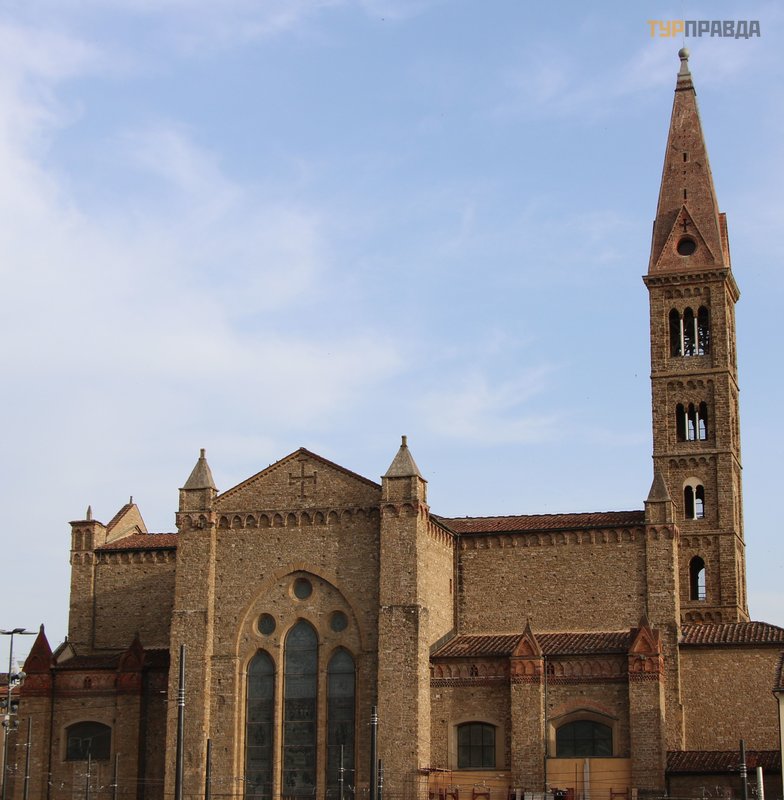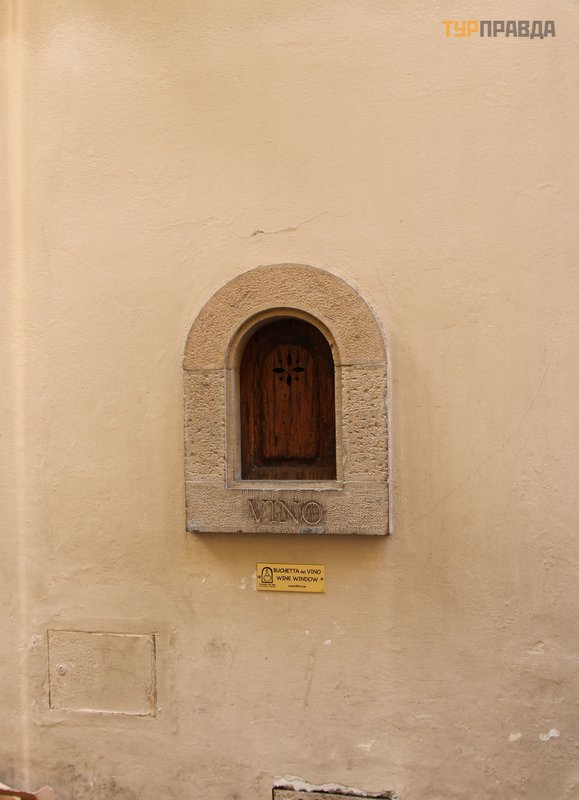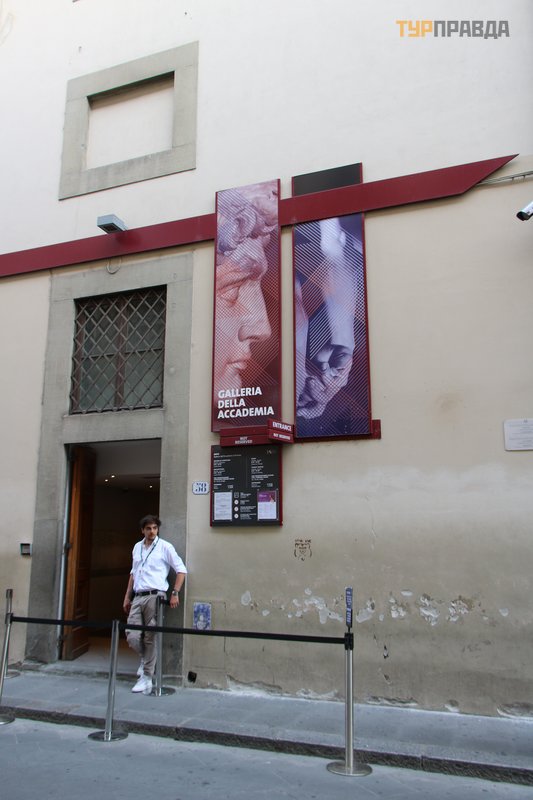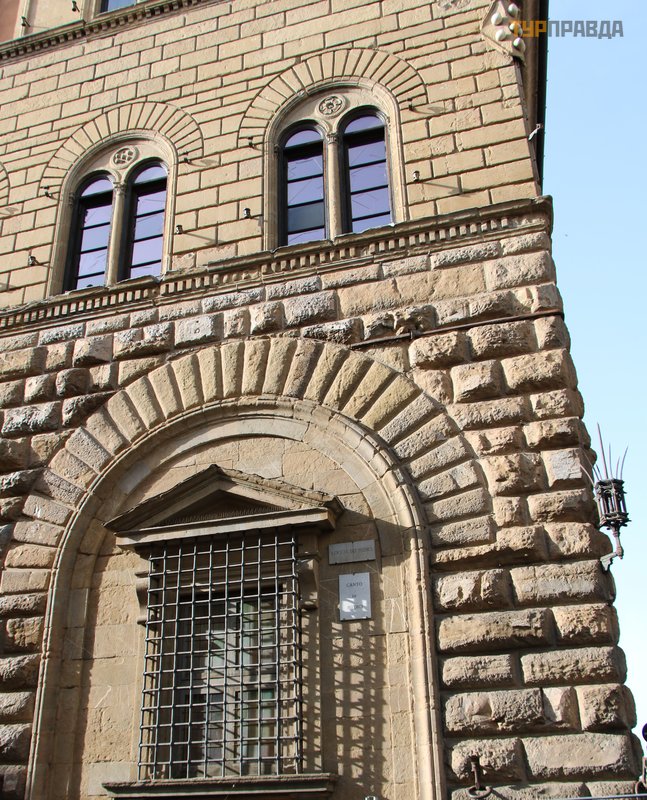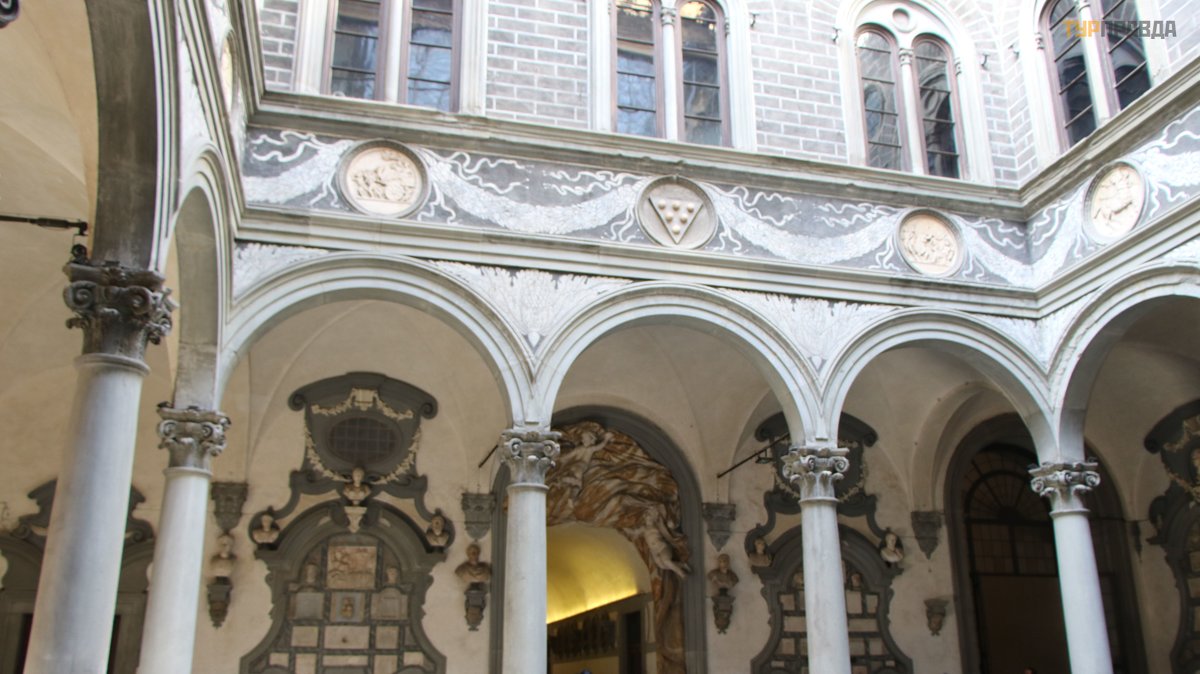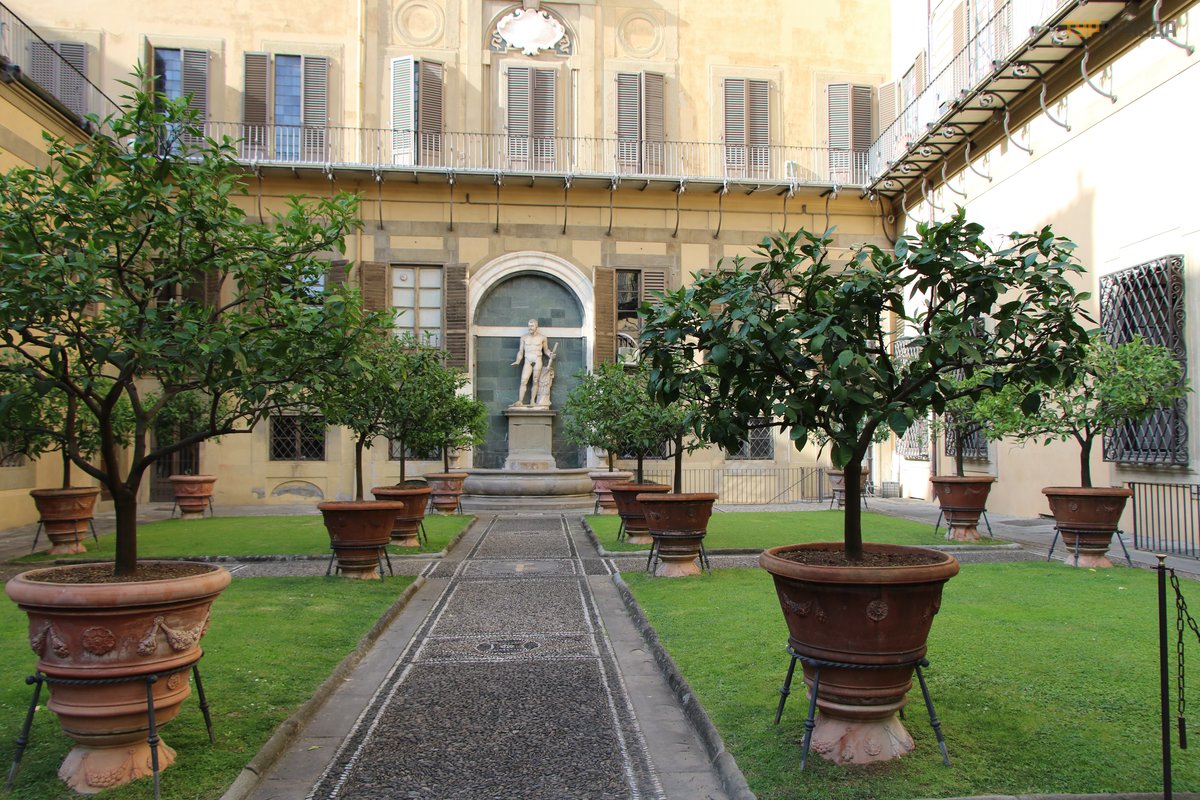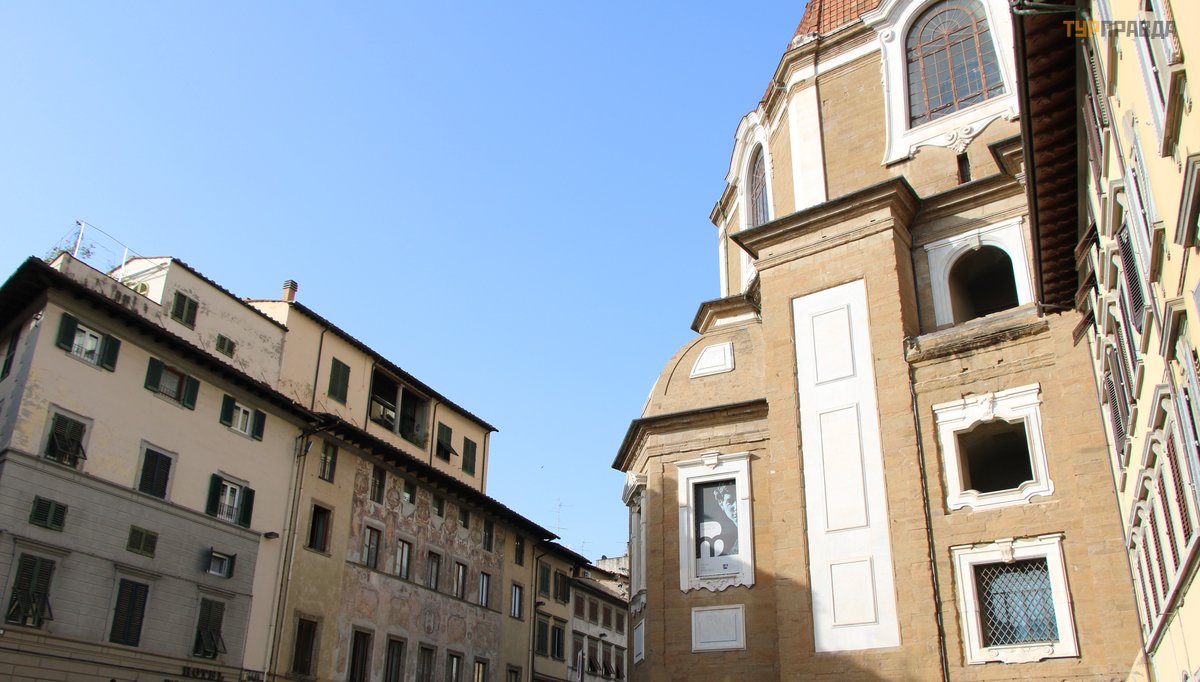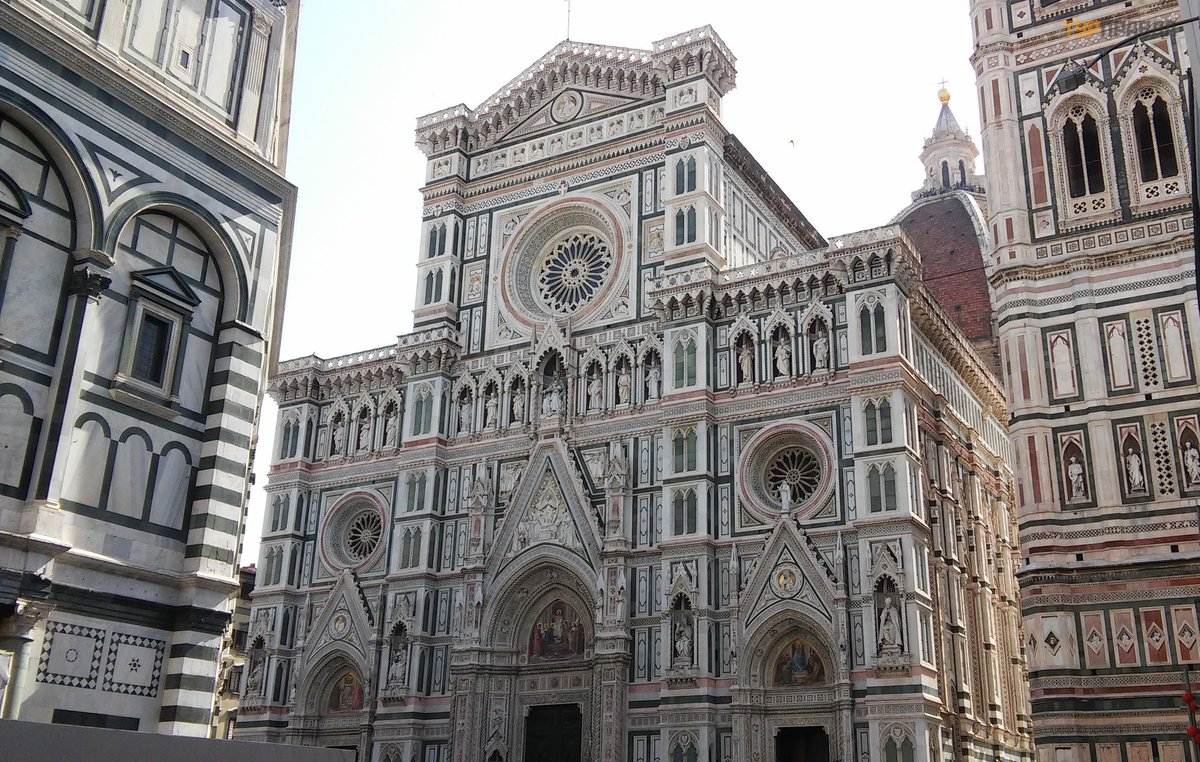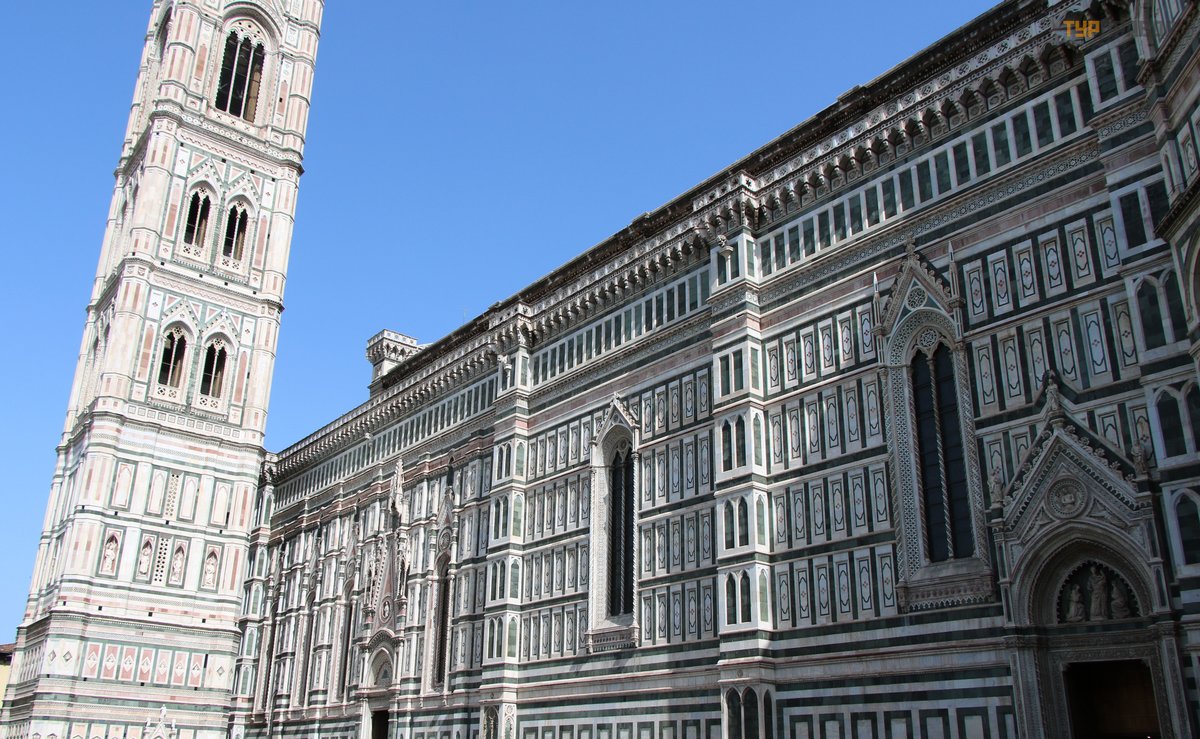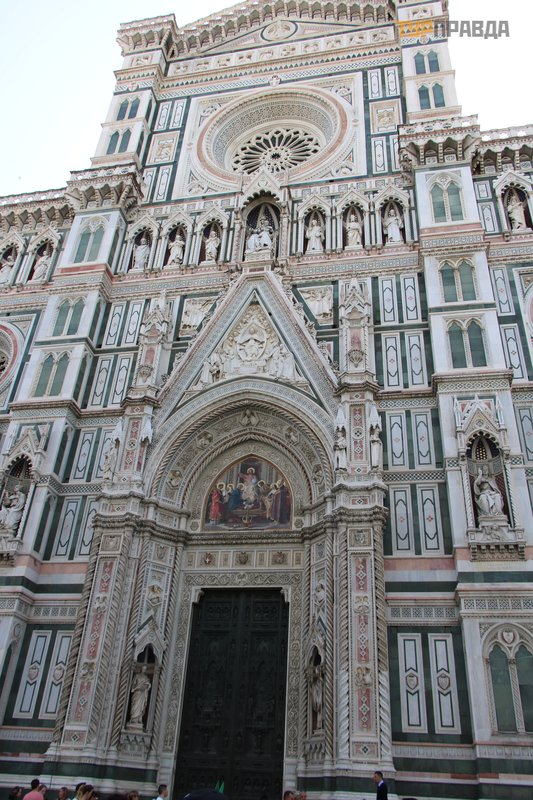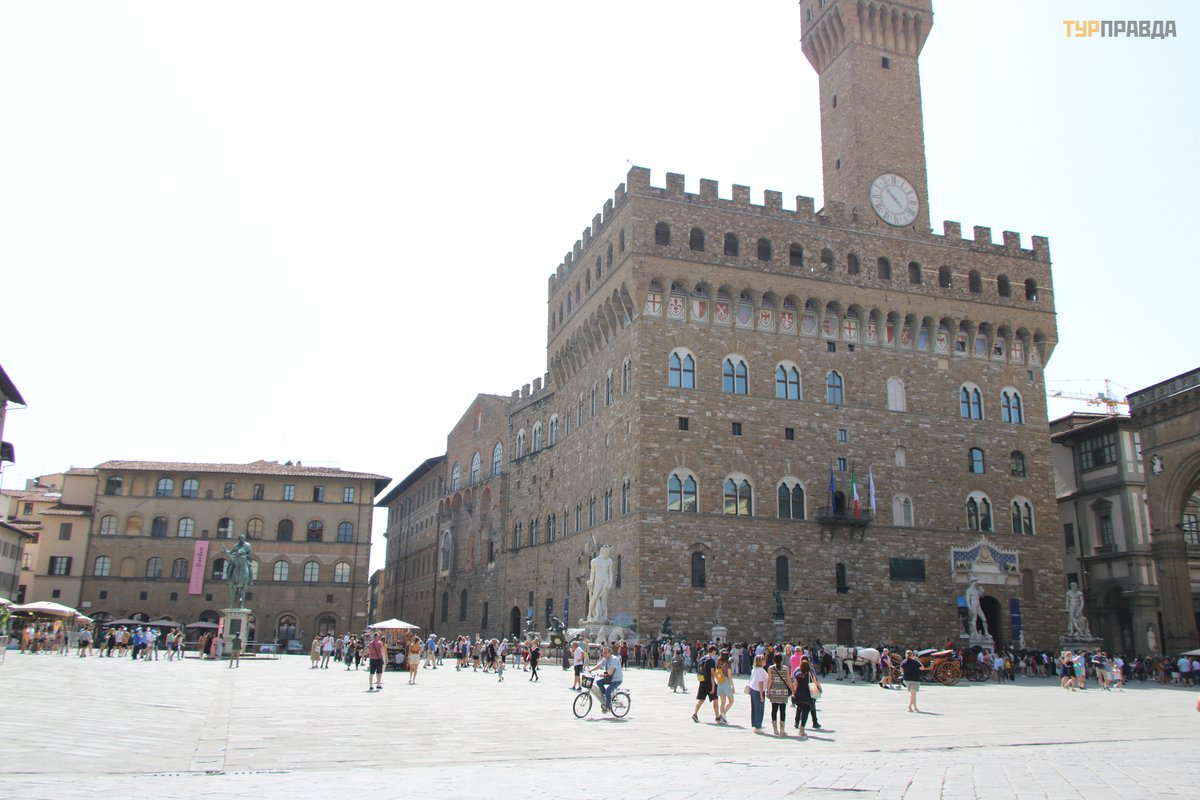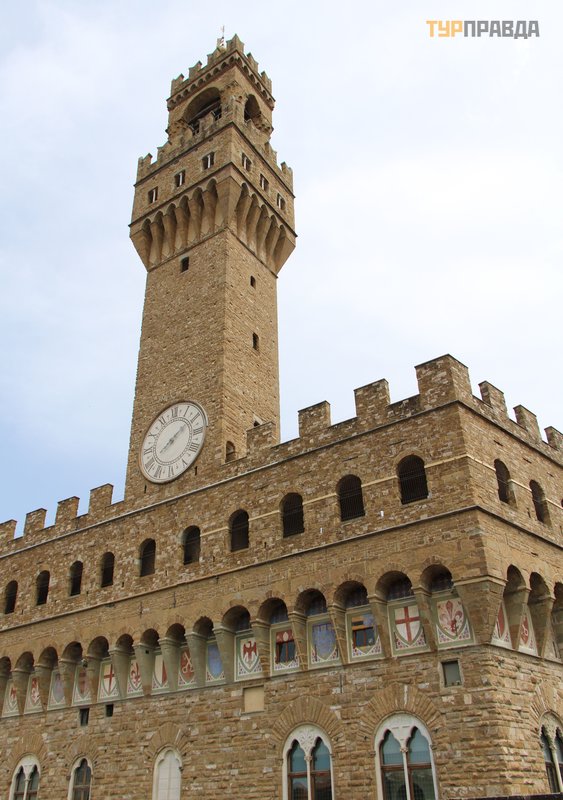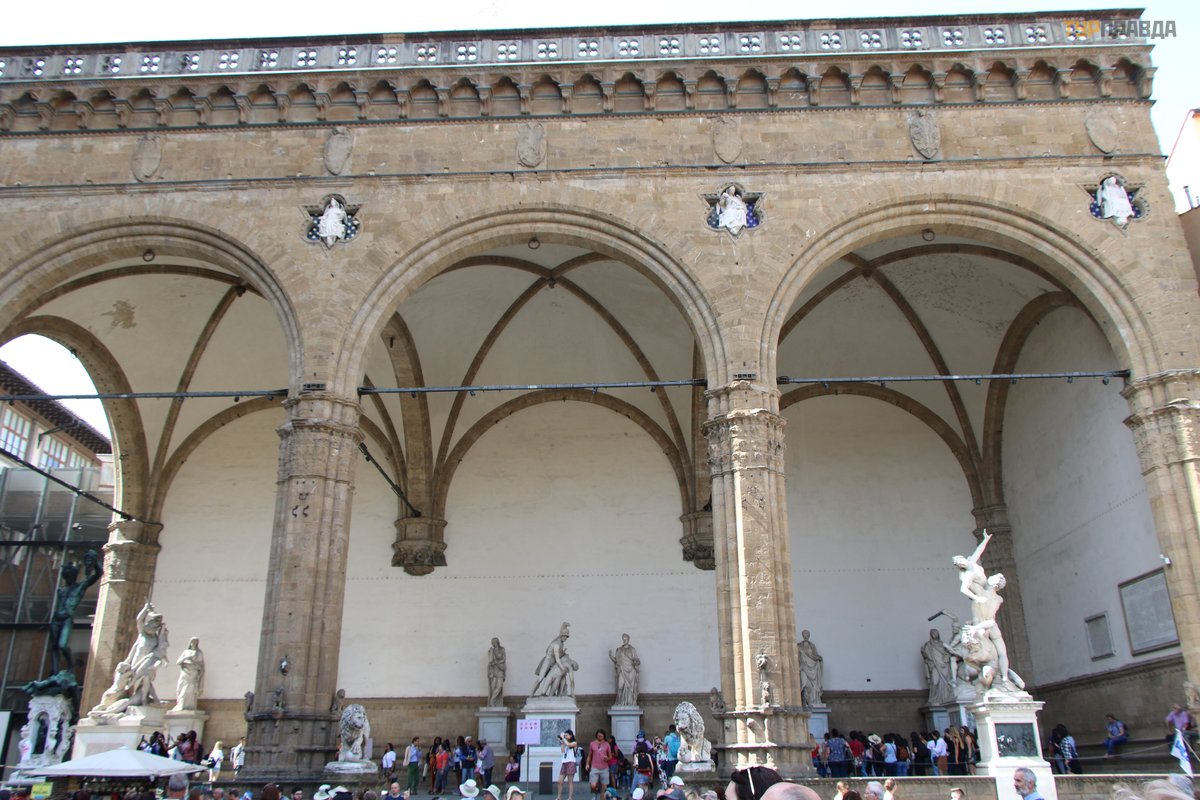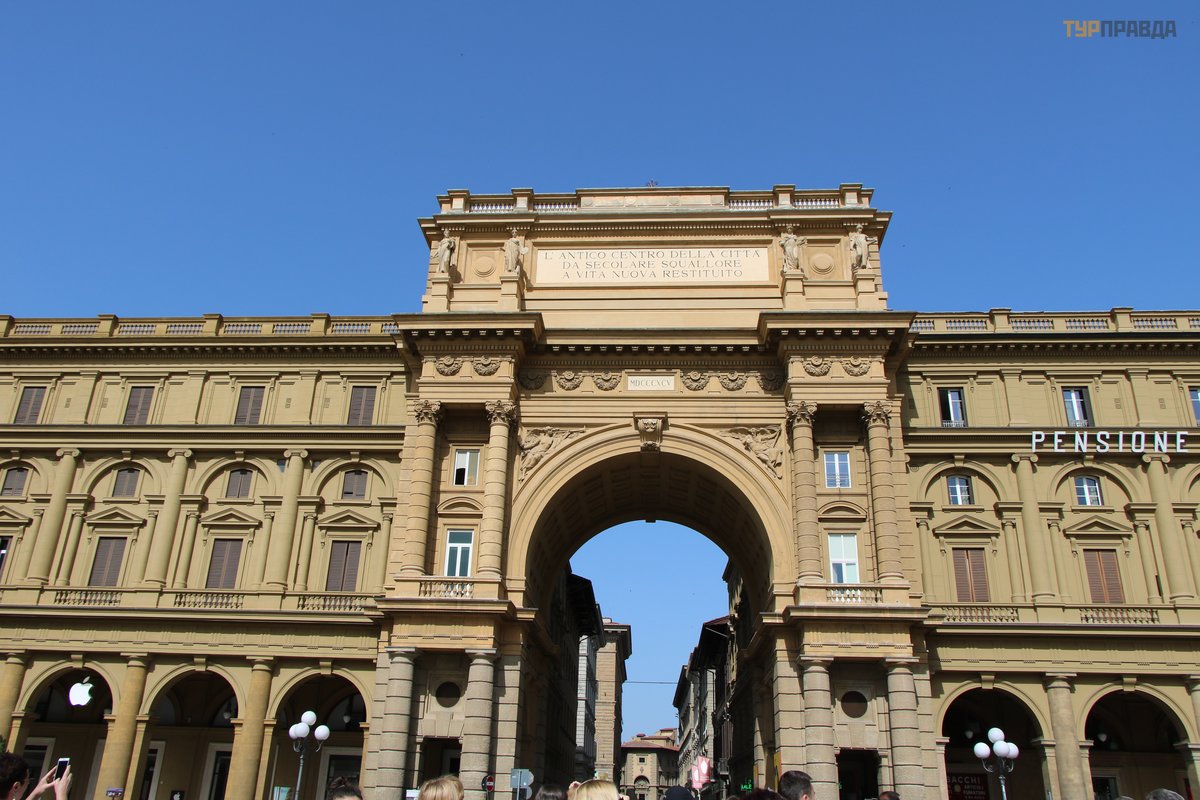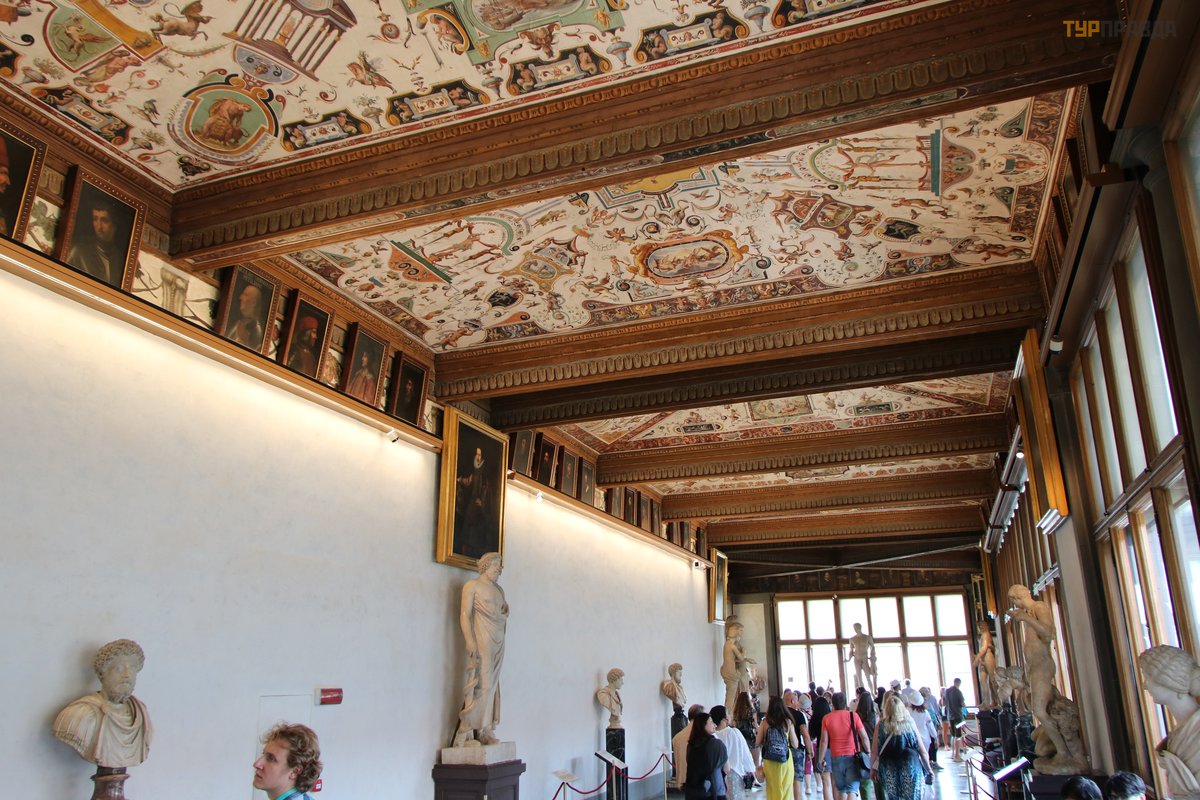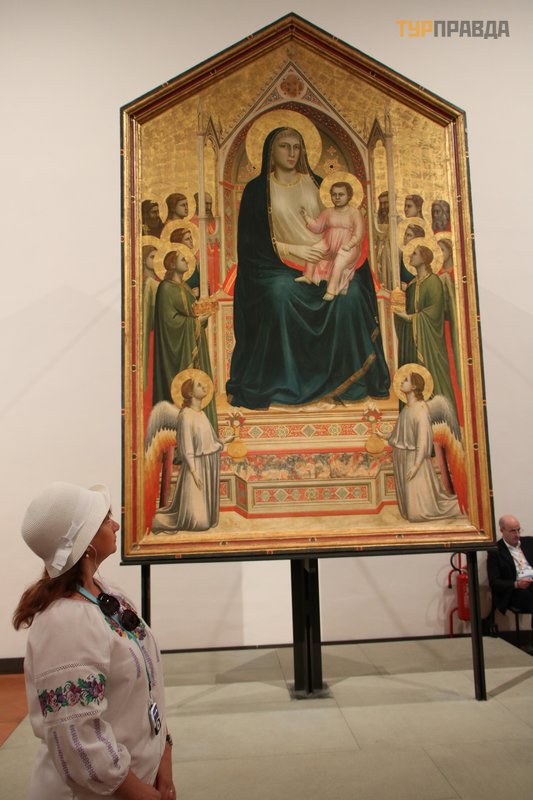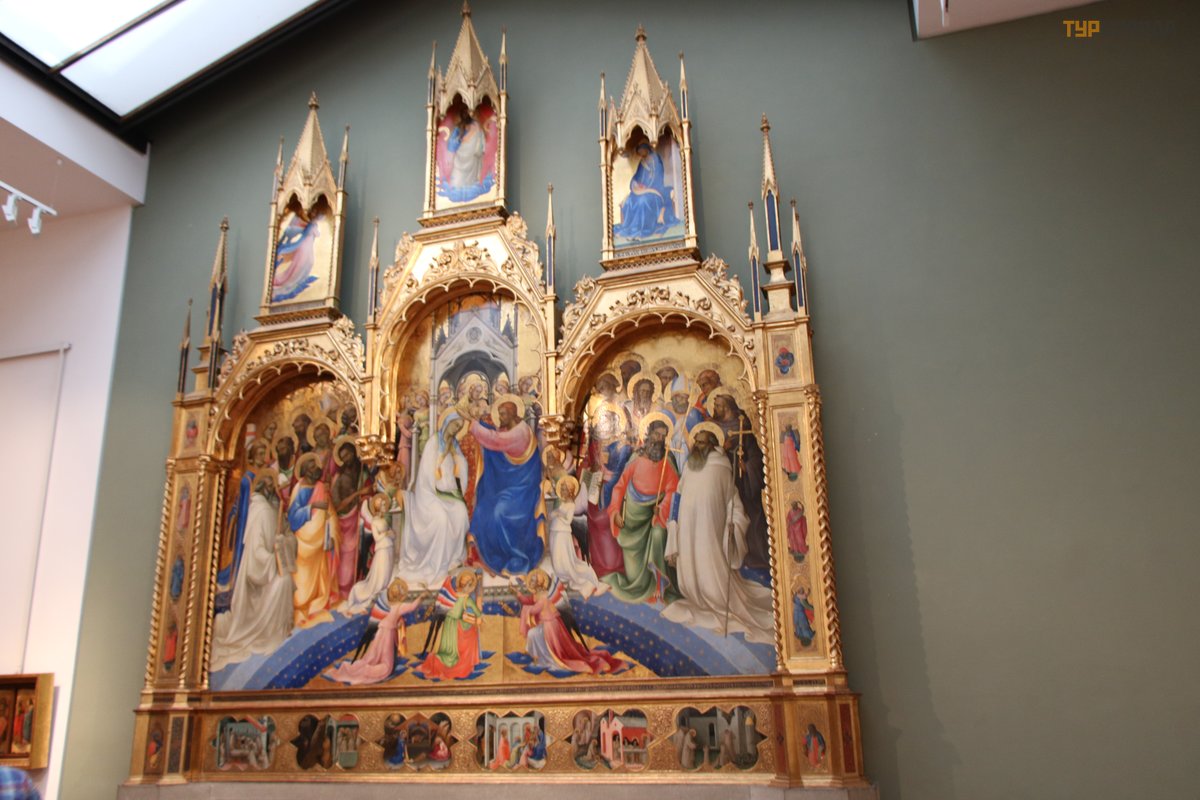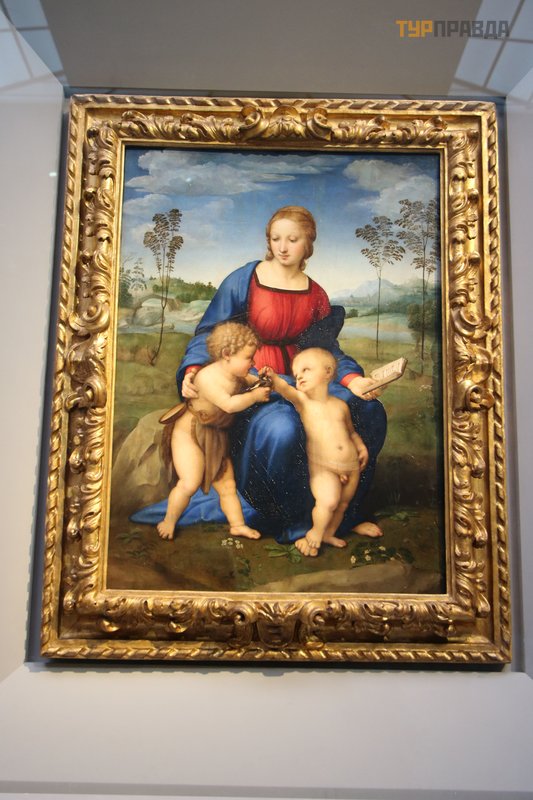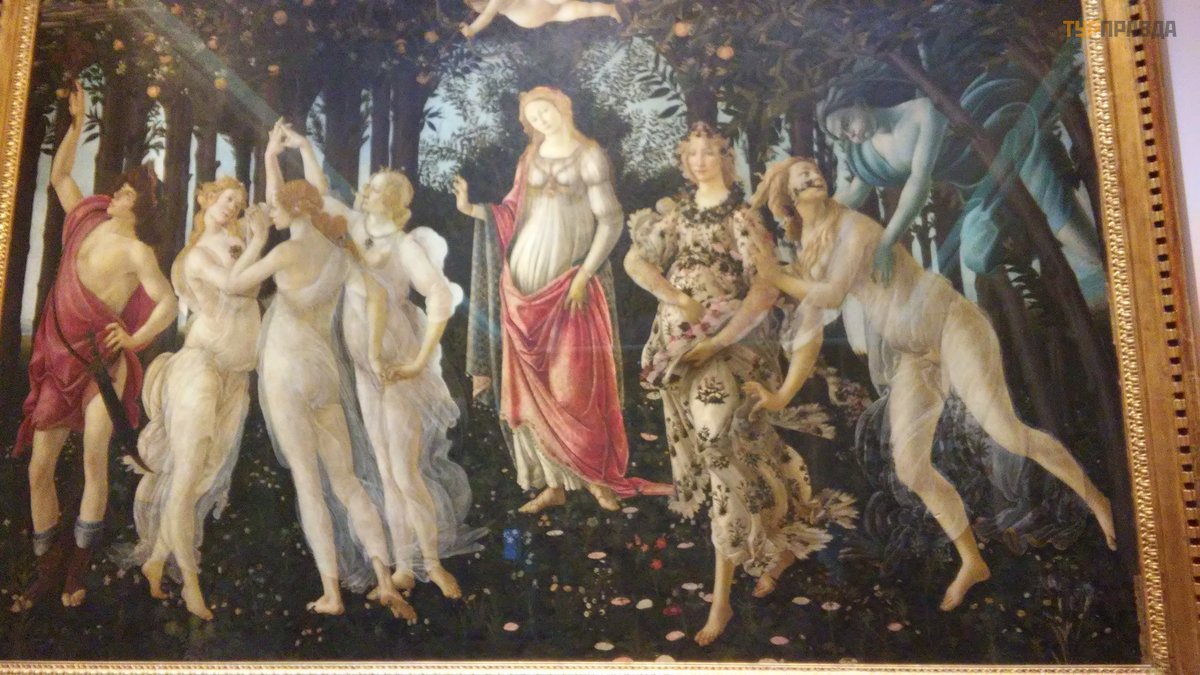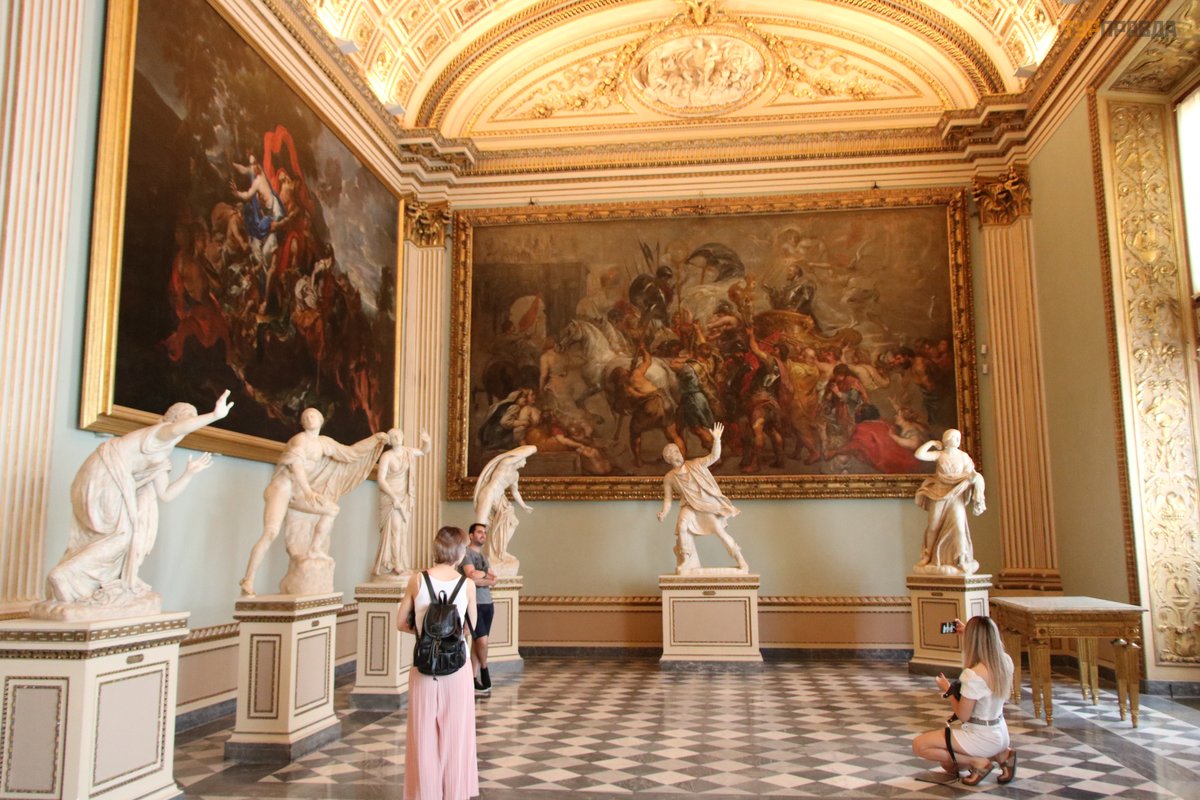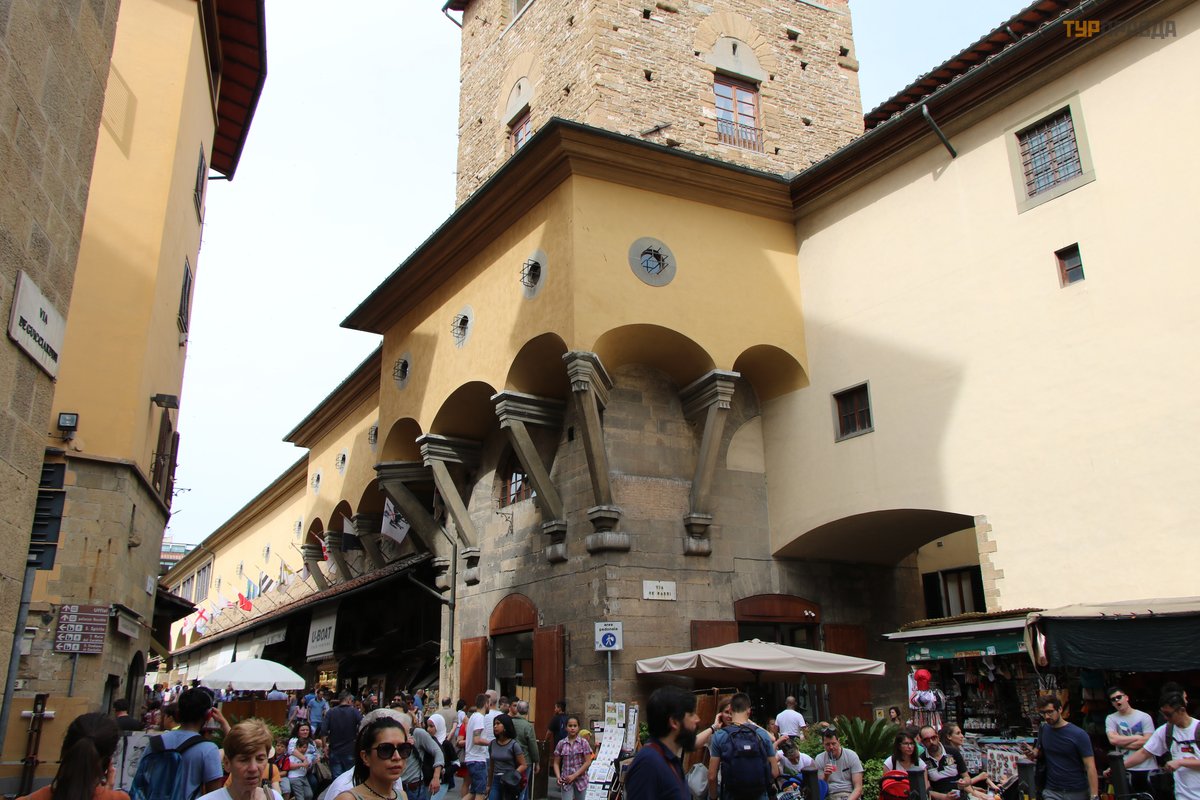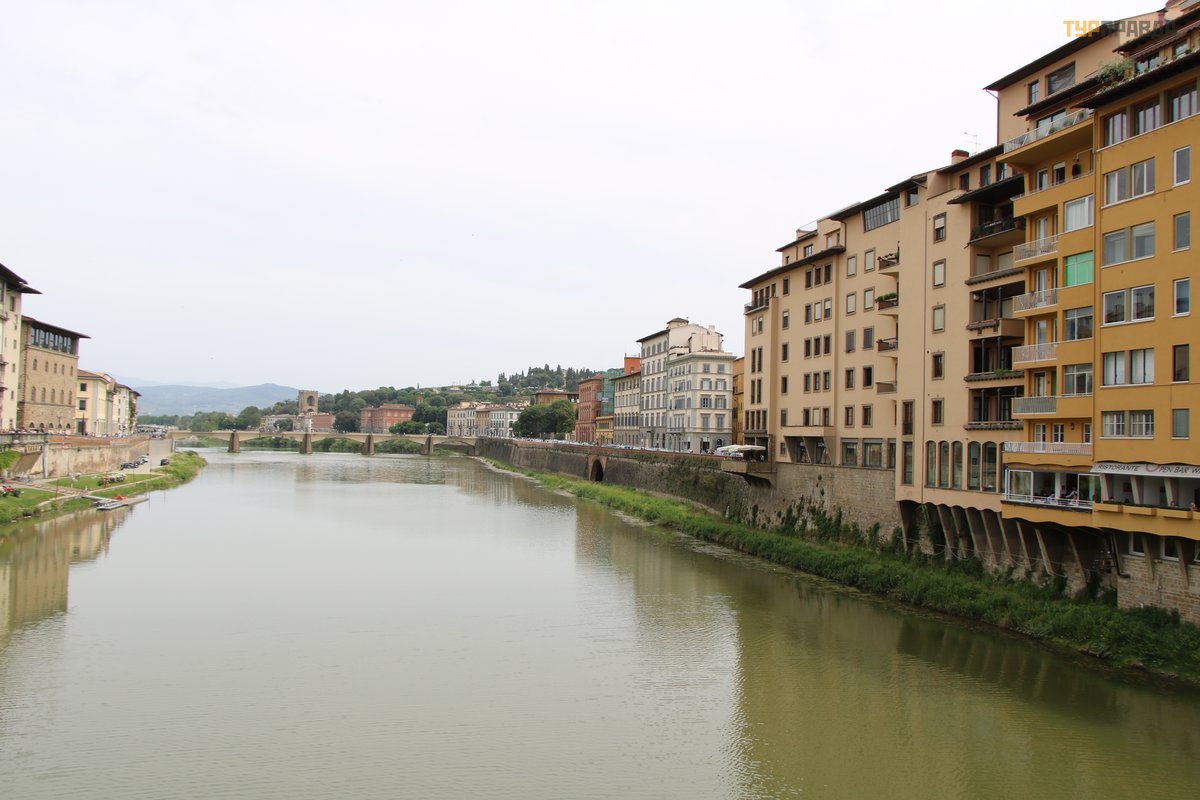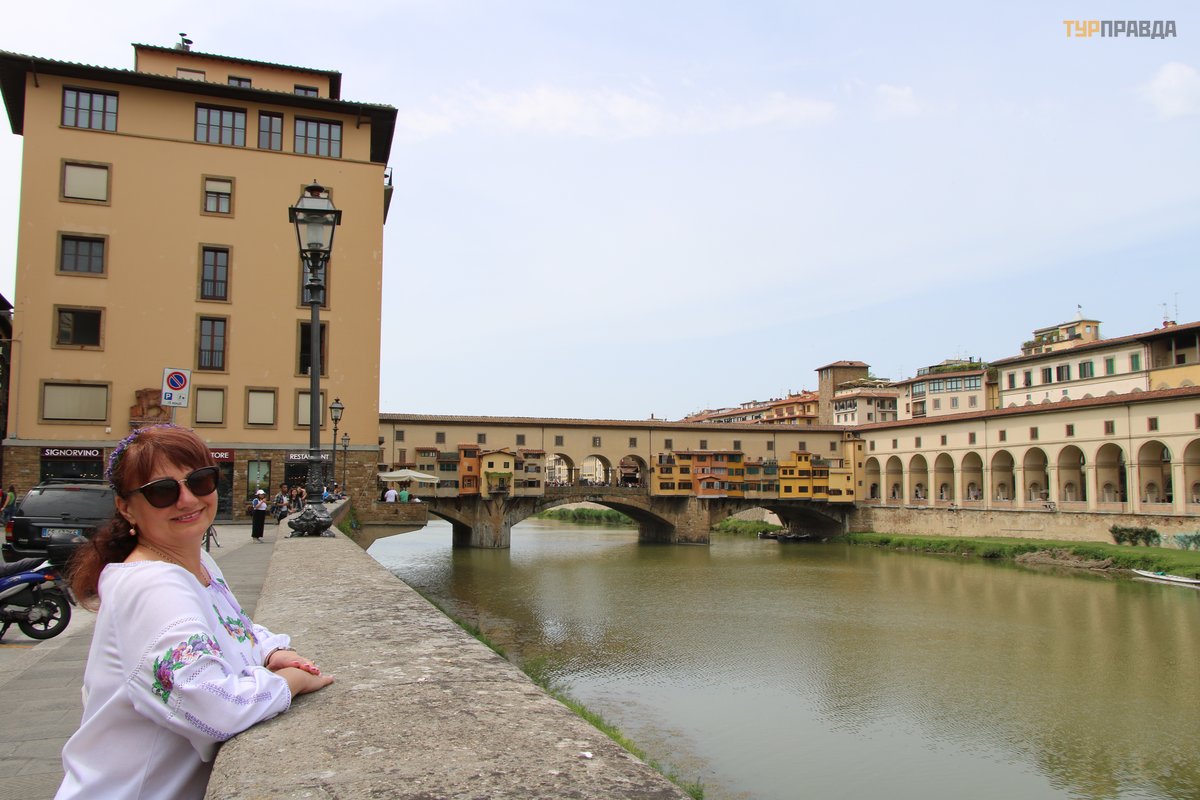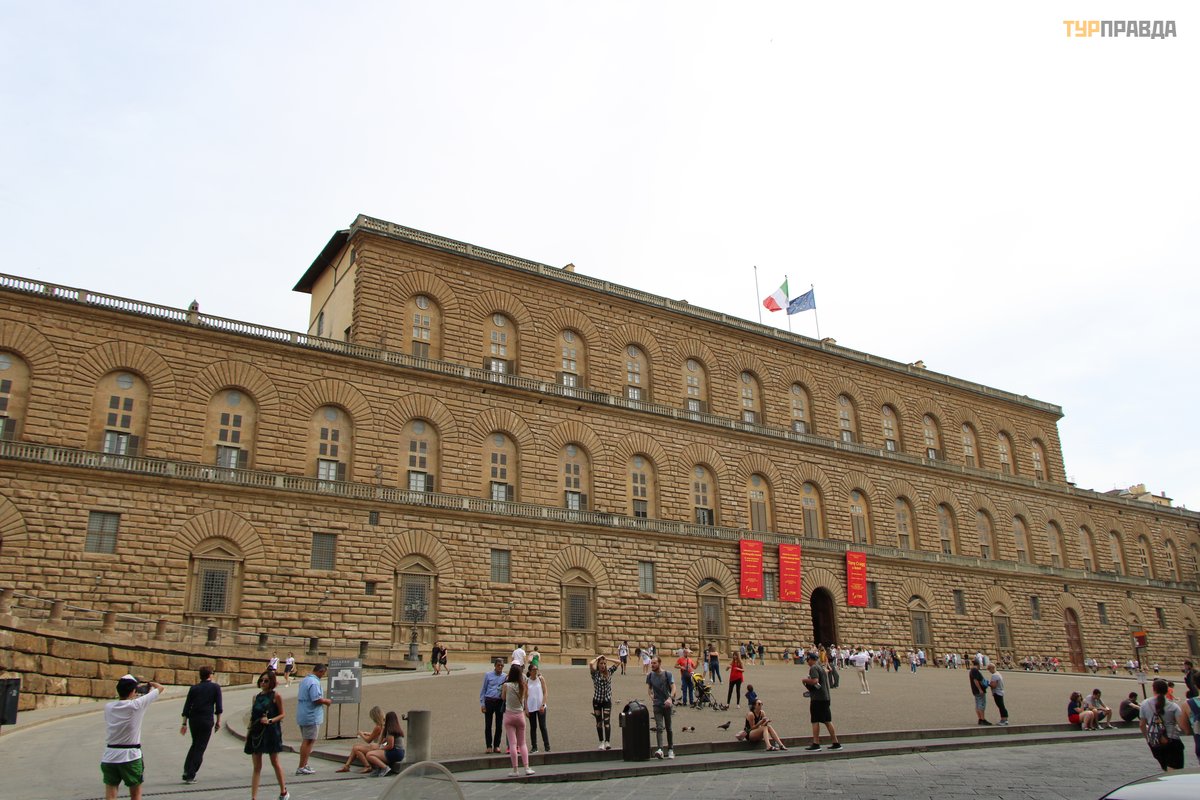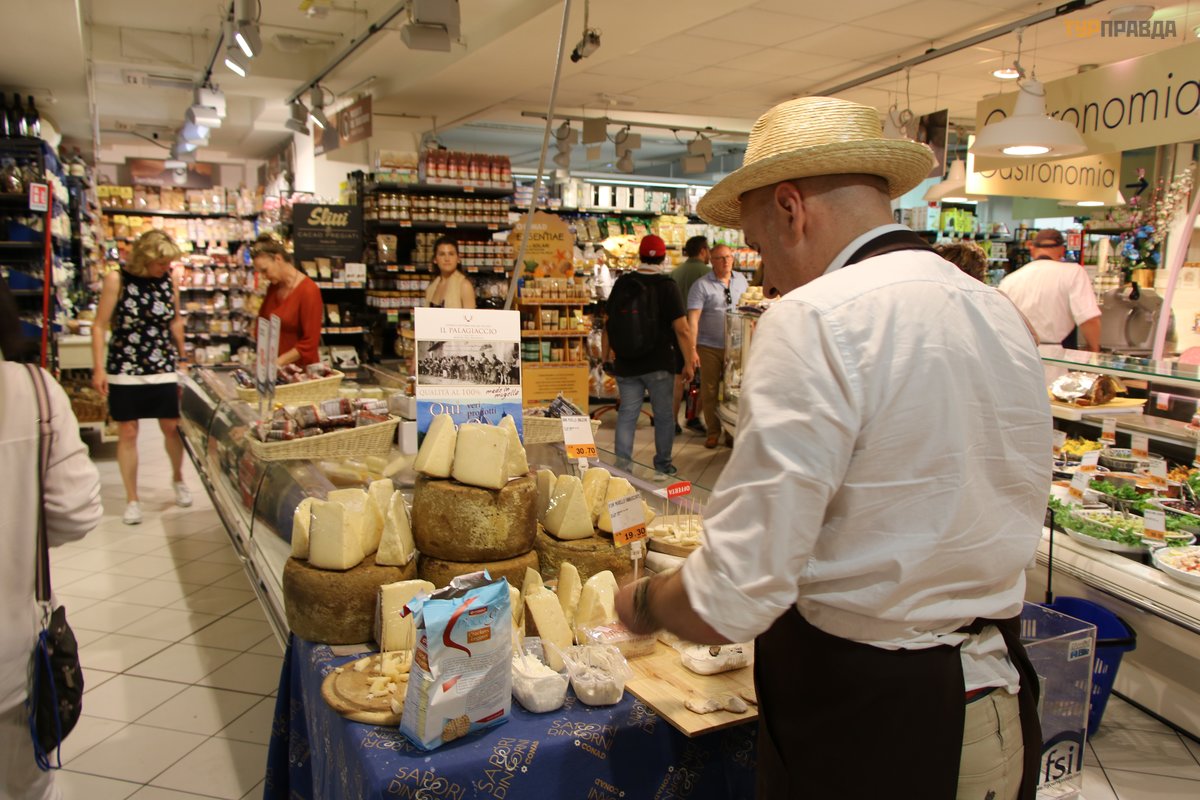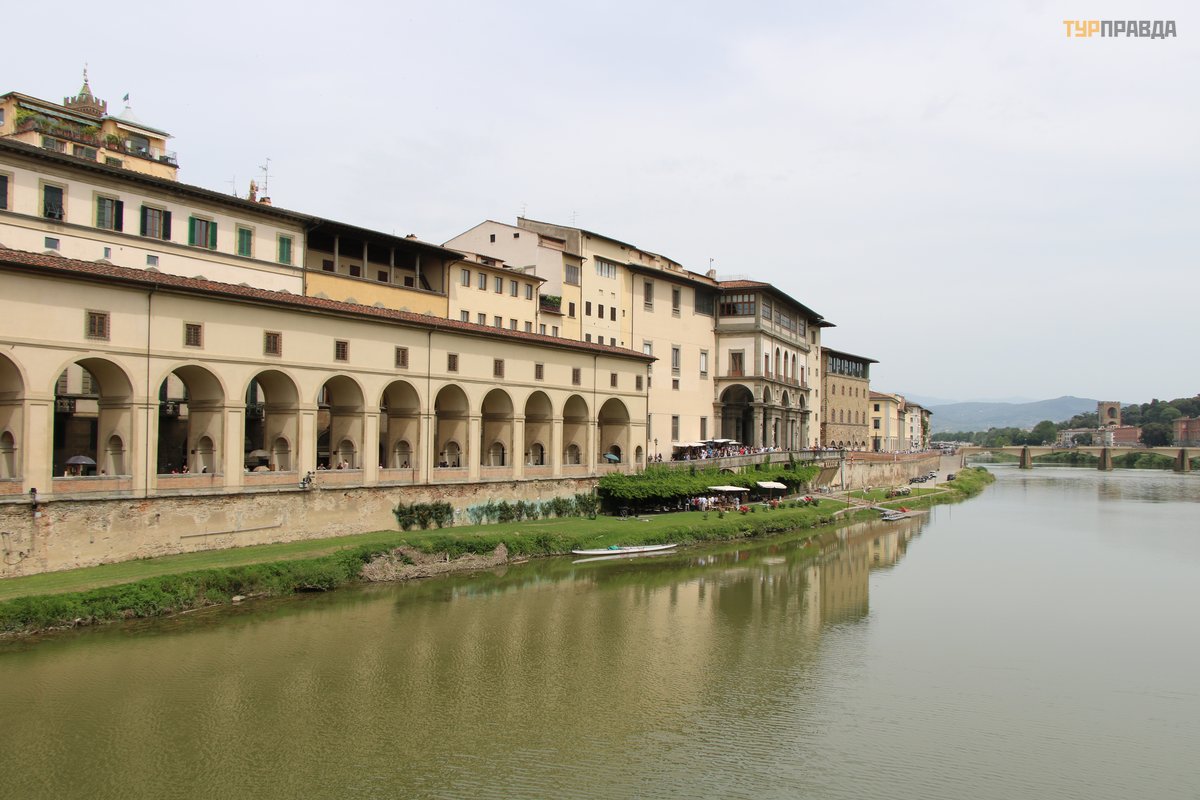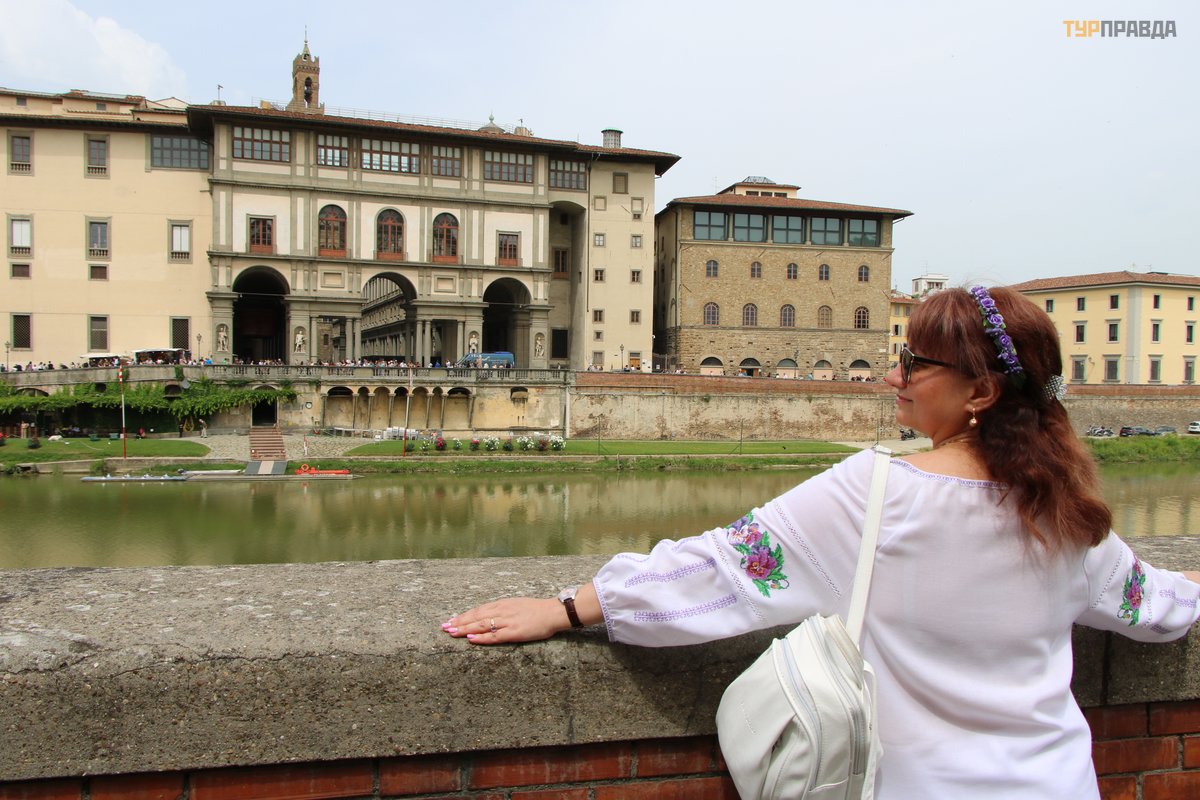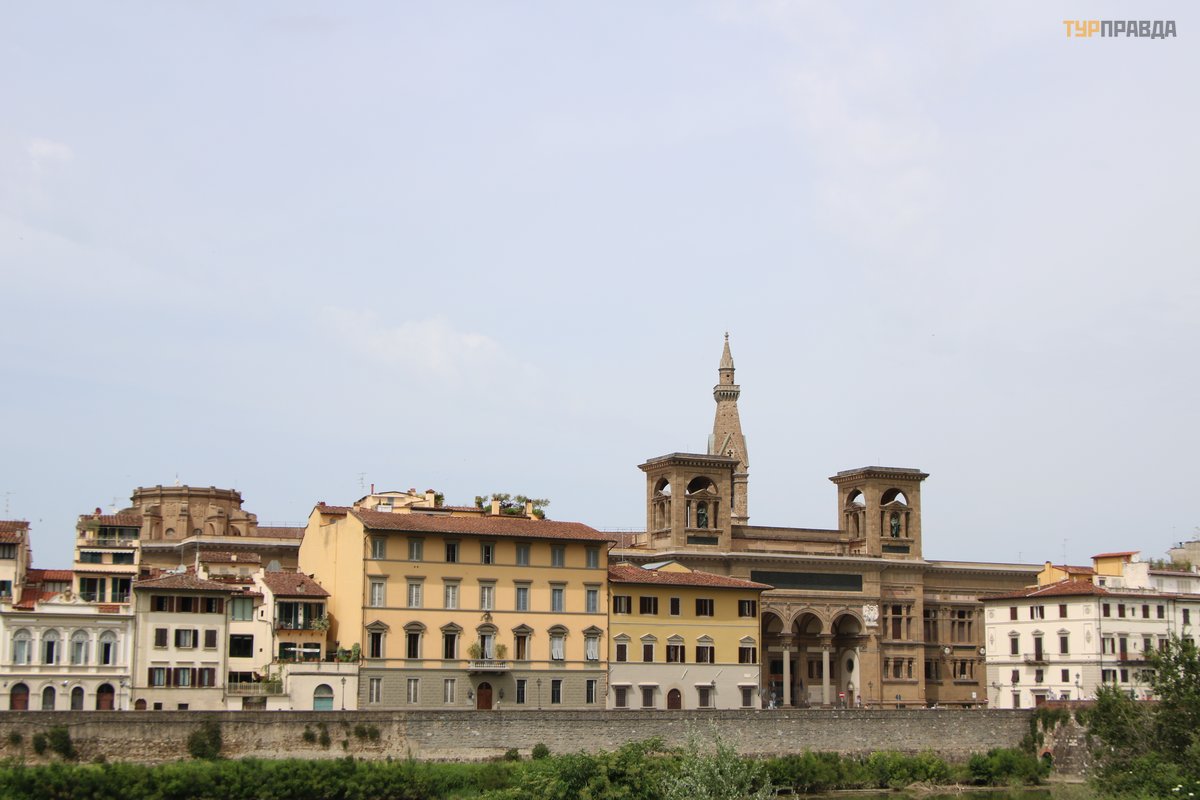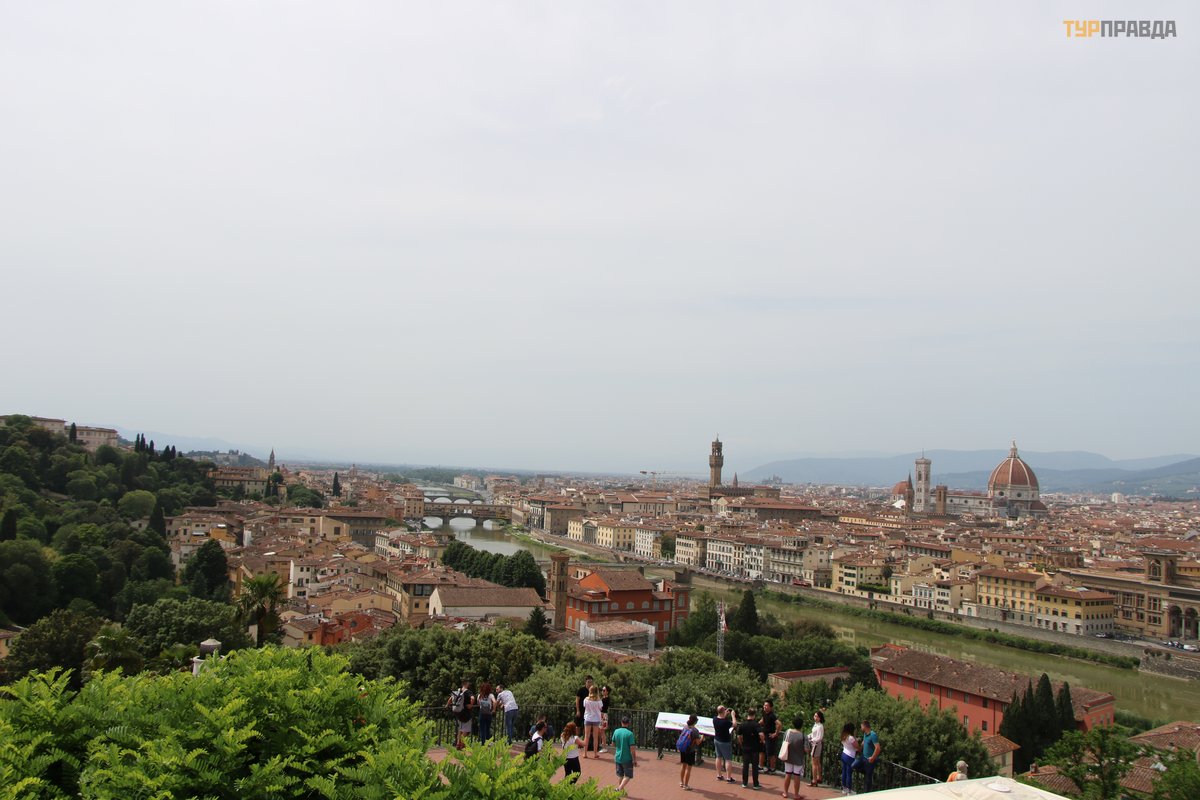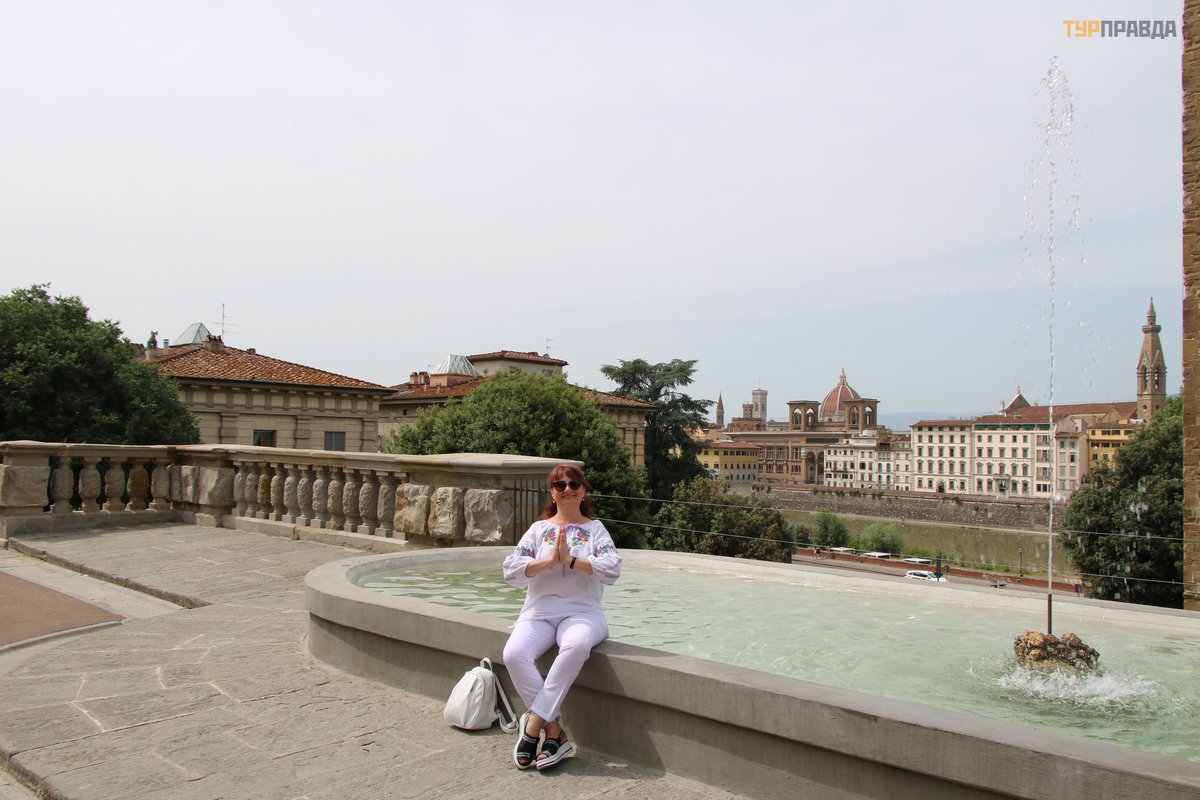Bongiorno Italy! Part 2. Florence - a symbol of the Renaissance and a flower of the Renaissance
Florence is not a city, it is an open-air museum. Narrow streets, medieval churches, majestic cathedrals, magnificent palaces, green gardens and craft workshops...
Well, fast forward a few centuries back - to the Renaissance?
Arriving in the city on a comfortable train, little resembling our domestic trough.
First we get to the railway station
So, our walk will start from here. And right in front of the station, we see the Dominican church Santa Maria Novella.
The facade of the building is marble and made in the Renaissance style. . .
... and here is the Gothic bell tower.
Florence is a city of grandeur, style and beauty. And there are so many interesting places around that the problem immediately arises, what do I crave to see today, and what will I try to postpone for my next visit to this amazing Italian city. I, of course, have a visiting plan called “by all means and immediately”, but only now the tour should be a sightseeing tour, i. e. we will not be able to see the interior decoration of palaces, basilicas, cathedrals and galleries, with the exception of the unique Uffizi Gallery, tickets for which I purchased in advance on the official website. So this is a must-see for me.
And I will slowly wander around Florence, hovering at all the walls, doors, stairs and lanterns, feeling under my feet every cobblestone that the great Michelangelo, or Raphael, or Da Vinci, or Sandro Botticelli stepped on... Lord, what names , straight to the point of trembling...
Oh, you need to knock on this window, just like many centuries ago, at dusk, the greatest creators of the Renaissance were knocking, being apprentices - artisans.
I didn’t get through, probably, I should have said my last name very loudly.
Oh! what narrow streets, houses hang right over you.
Dante's House Museum. Rather, Dante lived around the corner, and this is the Dante Museum.
The house looks very ancient, although it was built relatively recently, at the beginning of the 20th century. Previously, the area on which the house is located belonged to the Alighieri family. There is an exposition inside the house to show how the poet lived and worked, but we do not get there for the reasons already indicated.
In my head, I replay the picture of Dante's passionate love for the beautiful Beatrice and stop looking at Dante's stern profile, which the Chinese are pouring water heavily on. The purpose of this operation "Y" is not clear to me. Why "Y"? And so that no one guessed
I also want to go to the Accademia Gallery, where there is a five-meter statue of David by Michelangelo Buonarroti. Turn on maps. me : go along Via Sant Antonio to the intersection with Via Guelfa, turn right onto Via Rikasoli and see such a nondescript entrance
Oops! There is no queue, but the gallery is closed for some reason for an indefinite time, the cost is 12 euros. As a result, I have a desire, but I don’t have the opportunity, I didn’t have to bother searching, but nearby is the history of the rulers of Florence - the architectural ensemble of the Medici family, which includes the Palace, the Chapel and the Basilica of San Lorenzo.
The Medici Palace was built for its ruler, Cosimo. And at first the project was created by the famous architect Brunelleschi, but Cosimo, thinking that excessive pathos would cause envy, considered it too magnificent, entrusting the construction of the Palace to another architect Michelozzo, who began construction in 1444. And now we see that the mansion has a too simple appearance and is more like a prison.
The Medici lived here for several centuries. But after the reign of Pietro Medici, nicknamed "The Loser", the estate fell into disrepair, and the family was forced to sell it. So, in 1659, the building began to belong to the Riccardi family, who reconstructed it somewhat. Now the Palace houses a library and a prefecture.
The inner courtyard is a quadrangle with an arcade courtyard.
The sculpture of Baccio Bandinelli "Orpheus pacifying Cerberus"
Bottom we see the coat of arms of the Medici family - six balls and lilies.
The Chapel is the tomb of the Medici family
The Basilica of San Lorenzo with the Chapel of the Princesis a work of art, since the Medicis attracted the best craftsmen for their construction: Brunelleschi for the church, and Michelangelo for the chapel. Thus, the noble family wanted to perpetuate the memory of their illustrious princes. But even before the completion of the Basilica, both artists died, and the construction of the Brunelleschi church was completed, while the Michelangelo chapel remained unfinished.
If you will be in Florence for a longer time than we did, then consider this ensemble in detail (it's worth it! )
And now fromPiazza San Lorenzo
move to Piaza del Duomo to see the famous masterpiece of the Renaissance - the grandiose Cathedral of Santa Maria del Fiore, the construction of which started in the 13th century and was completed only at the beginning 19th century, for 600 years this masterpiece was built.
And now the Cathedral is a symbol of the capital of Tuscany, which is the most beautiful and popular attraction in Florence.
In terms of its dimensions, the Cathedral is unique, with a capacity of more than 30 thousand parishioners, that is, it previously accommodated almost the entire city. It is not possible to take a picture of the Cathedral completely, it does not fit into the lens of any camera.
The architectural style of the Duomo is a rare Quattrocento style - it is an interweaving of Gothic and early Renaissance.
The construction of the dome of the Cathedral began in the 15th century and was entrusted to the greatest architect of the time, Filippo Brunelleschi. He accurately calculated the parameters of the octagonal tower and the elongated spire. It was also necessary to develop and implement a number of mechanisms that would allow entire sections of the dome to be raised to a great height. And such a frame to this day holds the dome of the Duomo, whose weight is 37 thousand tons.
(On the topic of the day: in Kyiv, using all modern technologies, we built the Shulyavsky bridge, which immediately collapsed safely. )
The temple can be seen from all points of the city, wherever the traveler is. Particularly visible is the 90-meter tower called Giotto's Campanile. (Giotto at that moment was the chief architect of Florence). There is no elevator in it, but you can go upstairs by overcoming more than 400 steps.
The complex of Santa Maria del Fiore also includes the Baptistery of San Giovanni.
The baptistery is a place for baptism, which bears the name of John the Baptist. Dated around the 5th century AD. The building was built in the Romanesque style.
Combined ticket costs 10 euros and includes: Baptistery, Campanile climb and Brunelleschi's dome climb.
To be honest, we didn't go anywhere, as we had reserved tickets to one of the oldest museums in Europe - the famous Uffizi Gallery.
Tickets were purchased online in advance, the cost is 20 euros and 4 euros for the reservation. But keep in mind that on Mondays the gallery is closed, but there is one day of free admission - on the first Sunday of the month, but it seems to me that then the line will need to be occupied in the evening.
The gallery is located in the heart of Florence between Piazza Signoria and Ponte Vecchio.
The Piazza della Signoria is ancient, and dates back to the 13th century, and got its name from the Palace of the Signoria.
Directly in front of the Palace of the Signoria is the bronze statue of Judith with the Head of Holofernes by Donatello, erected by the Florentines in 1495 as a sign of the rebirth of the Republic. So, the head of Holofernes personifies the overthrown family of the Medici, and Judith - the liberated Florence.
*
The main advantage of the square is the sculptures, which can be viewed for free. It seems that they are randomly scattered around the perimeter, however, if you look closely, you can see that they still make up a single composition. The sculptures were created during the heyday of Florence by the famous masters Michelangelo and Donatello during the Renaissance in the 15th and 16th centuries. But on the square there are mostly copies of sculptures, while the originals are kept in museums.
The most famous to us is the statue of the biblical hero David, which was sculpted by Michelangelo. For a long time, the statue was in front of the Vecchio Palace, but after 300 years it was moved to the art gallery (where I didn’t get), and a copy of the sculpture was installed in the square.
And on the right is a sculpture of Hercules defeating Cacus by Bandinelli.
To the side of the Palazzo Vecchio is a bronze statue of Cosimo I de' Medici by Giambologna.
The Neptune Fountain adorns the center of the square, sculpted by the talented Ammannati.
On the sides of the square there are several old buildings, in one of the niches of the house there is the Loggia of Lanzi.
Here are Sculptures of ancient mythological characters: "The Rape of the Sabine Women" and "Hercules and the Centaur" by Giambologna, "Perseus with the Head of Medusa" by Cellini, and other equally masterpiece works, 15 statues in total. In general, Piazza della Signoria is a small open-air museum.
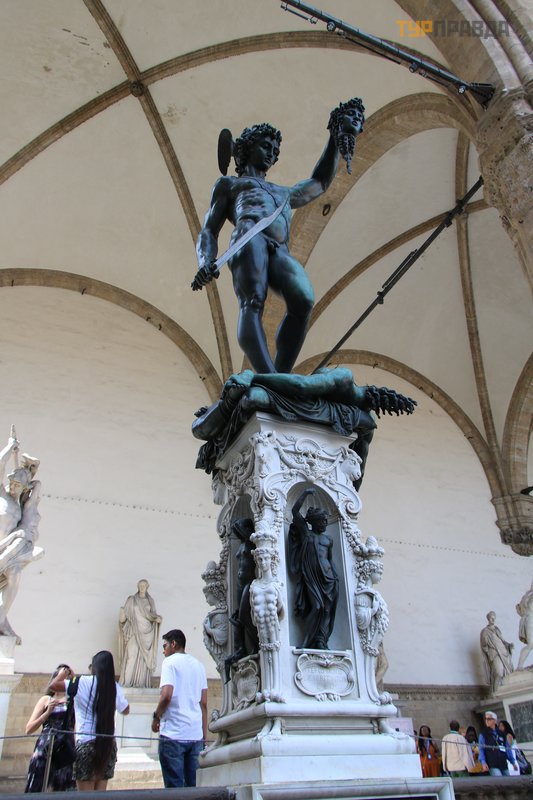 "Perseus with the Head of Medusa"
"Perseus with the Head of Medusa"
Next to the Loggia de Lanzi is the Uffizi Gallery.
The gallery is located in the Uffizi Palace, which is the creation of the famous Italian architect Giorgio Vasari, which previously belonged to Cosimo I de Medici. In 1560, Cosimo decided to place all the ministries and courts of Florence in the Palace. Thus, this Palace became a symbol of the power and greatness of the Medici family.
And these are local artists creating masterpieces on asphalt
Vasari connected the two buildings of the palace with an air corridor. During the Second World War, the building was badly damaged and flooded, some of the paintings were lost, and some were stolen by the Nazis.
And finally - the entrance to the holy, saints
(you can’t do this, only Americans behave like that, even the Chinese don’t allow themselves to touch the exhibits. And I, feeling a little American, allowed myself an ignorant gesture, which I confess)
Now the Uffizi Gallery is 13 thousand square meters of not just works of art, but real masterpieces of world heritage, after viewing which, you need to write a manual "How to visit the Gallery and not die"
This is the gallery corridor. And then. . .
Leonardo Da Vinci Hall, Raphael Hall, Michelangelo Hall, Botticelli Hall, Caravaggio, Titian, Rubens, Verrocchio, Veronese, your head is spinning, you are in euphoria that you can contemplate the most famous and rare paintings of different eras, antique sculptures, frescoes and tapestries… More than 50 halls… This is a real treasury of painting and sculpture from the Byzantine period to the Baroque.
And what is very convenient, all works of art are arranged in chronological order, starting from the 13th century and ending with the 18th century.
The first halls are expositions of ancient frescoes and icons on biblical themes
One can observe how the art of painting gradually improved and new technologies were added
Gradually moving from the 13th century to the Renaissance
Madonna and Child with Angels (Madonna Rucellai) Duccio di Buoninsegna 13th century
Madonna Ognisanti Giotto di Bondone 14th century?
Madonna Magnificat by Sandro Botticelli? 15th century
Sandro Botticelli's Madonna with Pomegranate? 15th century
The Coronation of Our Lady by Lorenzo of Monaco 15th century?
Madonna with a Goldfinch Rafael Santi 16th century?
The Doni Madonna by Michelangelo Buanarotti, 16th century, is the only completed easel work that has survived to this day, depicting the Holy Family. This painting was painted by the great artist before his work in the Sistine Chapel.
The gallery presents more than 20 paintings by Raphael Santi. The most famous works are self-portraits and portraits of the artist
The Leonardo da Vinci Room is also full of the Master's masterpieces.
The most famous are the "Adoration of the Magi"
and "The Baptism of Christ" -the picture has its own interesting fate of creation.
It was written by Andrea Verrocchio, very famous at that time, together with his student Leonardo da Vinci. Verrocchio was a sculptor and could not finish the painting he had received on order from the Benedict monastery. He decided to entrust this matter to his student Leonardo da Vinci, and, having later seen the completed canvas, the sculptor never picked up brushes again, the picture was so perfect.
And my favorite Sandro Botticelli
"Spring", which is often on everyone's lips
"Altar of Saint Barnabas"
"Pallas and the Centaur"
And this is one of the most beautiful parts of the palace - the octagonal Tribune, where the greatest masterpieces are shown. The Tribune Room was built by the Duke of Medici in honor of his marriage to Bianca Capello for a collection of works of art. It was the first collection of the private Uffizi Gallery.
(on the right - the sculptural group "Wrestlers")
(here we can see Venus Medici)
Very interesting sculpture halls
Niobe Hall
If you happen to be in Florence, then the Uffizi Gallery is a must-see! And it doesn’t matter at all whether you are a great connoisseur and connoisseur of art or an amateur. It is impossible to pass by such beauty, even if it is much more pleasant to sit in a restaurant.
Well, let's also hit the ice cream. Next to the gallery is the "Perche no" gelateria (it's easy to remember why not). I read on the site that here is the most delicious ice cream in all of Florence, really delicious, but the Grom network did not surpass.
After having lunch, we continued our acquaintance with the capital of Tuscany. A beautiful view of the picturesque bridge opened up to us from the gallery window, so we went there.
The Ponte Vecchio Bridge and the Vasari Corridor
The Ponte Vecchio, as well as the Brunelleschi Dome , are considered showcases of the Italian Renaissance. This is the oldest bridge in Florence, built in the 14th century and representing the original three-arch structure.
The bridge was created to accommodate trading shops, the goal was achieved, and the bridge is still used for its intended purpose.
There are boutiques of famous brands here, especially many shops with jewelry, so the bridge began to be called Golden. The earrings I liked had a price tag of 2800 euros, so my face was left undecorated.
From the arches located in the middle of the bridge, you can see other ancient bridges - Ponte Alle Grazie and Santa Trinita, as well as the picturesque surroundings of the Arno River.
The upper side of the bridge is the Vasari Corridor linking the Palazzo Vecchio and the Uffizi Gallery with the Pitti Palace.
Pitti Palace:
On the way we stopped by the leather goods market.
But not all products here are Italian, there are many Chinese consumer goods. But, if you have time, you can choose an original bag or a leather belt.
The market is colorful and the prices can be said to be quite democratic, if you are hungry, you can have lunch here.
It turns out that not only Belgium and Switzerland are famous for their chocolate, Italy also has something to brag about.
Well, we still have one more very important object for inspection - Michelangelo's Hill. We are making a visit to Michelangelo. Along the way, we admire the magnificent landscapes.
The local population is resting
Well, here we are almost there
Pay attention to what interesting niches
A staircase through the Rose Gardens led us to the Michelangelo Viewpoint
from where you can enjoy an amazing view of Florence.
Florence, bathed in the sun, with its cathedrals, museums, palaces, towers, squares and domes lay in full view.
You can admire such views endlessly
No! Meditation urgently needed! From such dizzying beauty you can go crazy!
If you have time, be sure to take a walk in the Boboli Gardens, it's extremely beautiful!
This is Florence in one day. Of course, overview, more could not be expected. But! Florence from the inside is now in my program of the future, and who knows which of them will turn out to be more colorful... And we are waiting for the eternal city to which, as you know, all roads lead. (to be continued).
P. S. We really enjoyed the Tuscan wines. Recommended!



